Disclosure: Meeple Mountain received a free copy of this product in exchange for an honest, unbiased review. This review is not intended to be an endorsement.
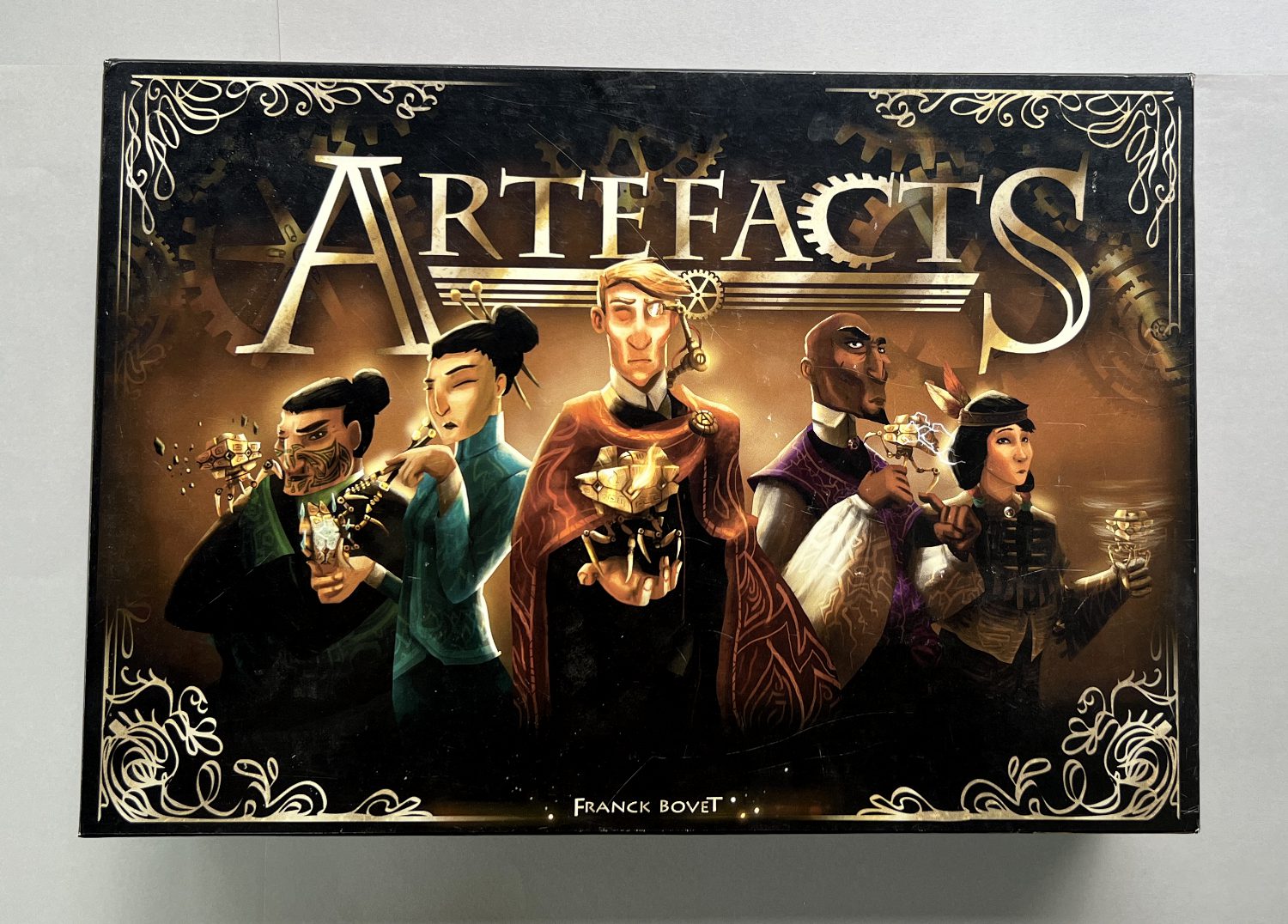
Three years ago, French game designer Franck Bovet contacted us about reviewing an advance copy of his game Artefacts. The flexibility of the modules and the way they allowed you to customize the game to your liking intrigued me, so I agreed to review it. The game arrived and I had a screen sharing session with Franck to go over the basics of the game. It was clear he had put a lot of thought into the game and was proud of how all the elements worked together.
His initial Kickstarter campaign ended early, so I had to postpone my review…by three years. But now Artefacts is back, with more components added since my review copy was shipped out. Franck recently told me I have the only copy of Artefacts in the US, which is quite an honor.
Please remember that the photos used in our exclusive US review are both from a prototype and are three years old. See the Kickstarter campaign—starting in June 2024— for the updated components.
Game Zero: Overview
At first glance, Artefacts might appear to be just another tank battle game. However, taking a second look shows it is much more than that.
This is because Artefacts is a game with many layers. How deep a game you wish to play is entirely up to you. The introductory games, for instance, come with pre-made machines that have all the components available to you. In later games, you can choose to design your own machine by purchasing components, balancing your offensive and defensive positions against your opponents. Still later games will see you working to generate those components.
You can choose to add or leave out modules at your discretion. Artefacts is designed to be played at whatever level of depth—and length—you choose.
Join me over at the table and I’ll tell you what I mean.
Game One: Pilot Training
Artefacts is an arena combat game where players control a machine, their Artefact, to avoid obstacles and collect Prestige Points, and attack their opponents.
Your first game will be a Training Mission, where you’ll become familiar with the game’s mechanics for piloting your Artefact. To get you started, the game provides some pre-designed machines for you to pilot around the Arena. It also gives you a map of the Arena with spaces to place the walls you’ll need to steer around.
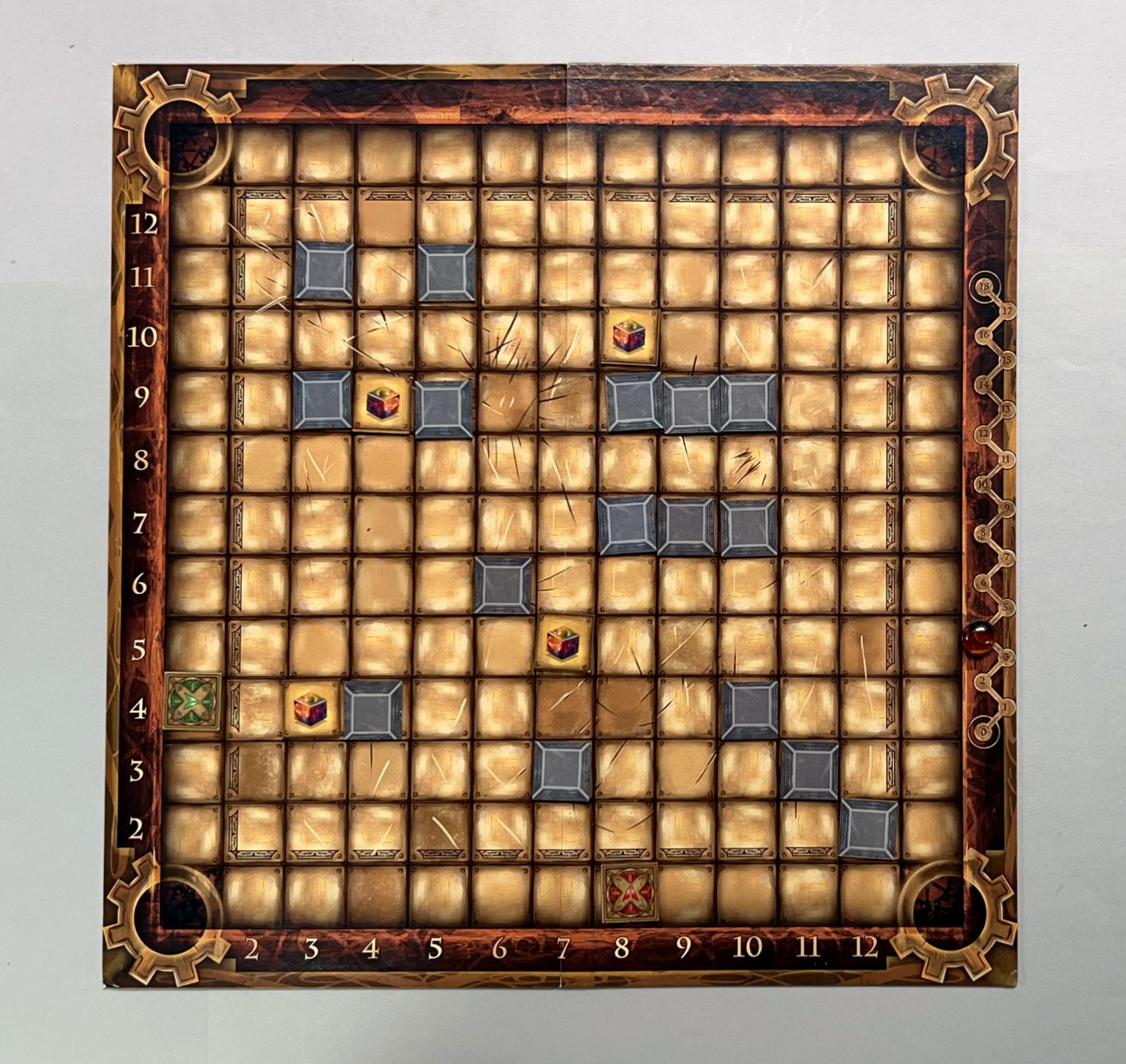
Your goal here is simple: have the most Prestige Points at the end of four rounds.
You’ll start by taking one of the four pre-configured player boards, ‘A’ side facing up, and the Artefact of the matching color. Place your Artefact on one of the squares along the side of the Arena, one Artefact to a side, taking care to position the front of your machine in the direction you want to go on your first turn.

Artefacts maneuver based on the placement of components in the Kinematics section of a player board. This round area has spaces for Needles and Arrows along the eight cardinal and ordinal directions that you’ll be able to choose in later games. For this introductory game, your initial player board will have Needles and Arrows marked for you. Lone Needles allow you to move one square in the direction shown (relative to the front of your Artefact). Arrows at the end of Needles allow you to move from 1 to 6 squares.
Above the main circular Kinematics section is an arc. A Needle here means you can turn 45° in that direction; two Needles mean you can turn 90°
At the bottom of your player board will be a number that indicates how many energy cubes you’ll start the game with. Under the Kinematics area is a section with five numbered slots. You’ll place five of your energy cubes here to show the number of actions you’re taking per turn. Then, as you take an action, you’ll move a cube from side to side. You’ll also place another energy cube on the Needle (movement) or Cannon (firing) you wish to activate to take that action. You can take the same movement action more than once per turn, but you’ll need to spend an extra action to recharge your Cannon to fire it a second time.
Along the right edge of the Arena there is a connected series of numbers to keep track of rounds in the game. Place a marker on the number four. (After your first game, you may want to increase this number as four rounds make for a short game.)
To score points, you can either shoot a Prestige Marker (5 points) and/or end your turn on top of a Prestige Marker (10 points). At the end of your turn, the Prestige Markers are returned to the Arena by rolling a pair of dice twice. The first result provides you with the x-axis coordinate; the second with the y-axis coordinate. (If a wall is in that location, roll again to get a new set of coordinates.)
NOTE: In this game, you are not firing on any other Artefact in the Arena.
Game Two: Let the Fight Begin
Turn your initial player board over to the ‘B’ side and let’s start to power up your Artefact.
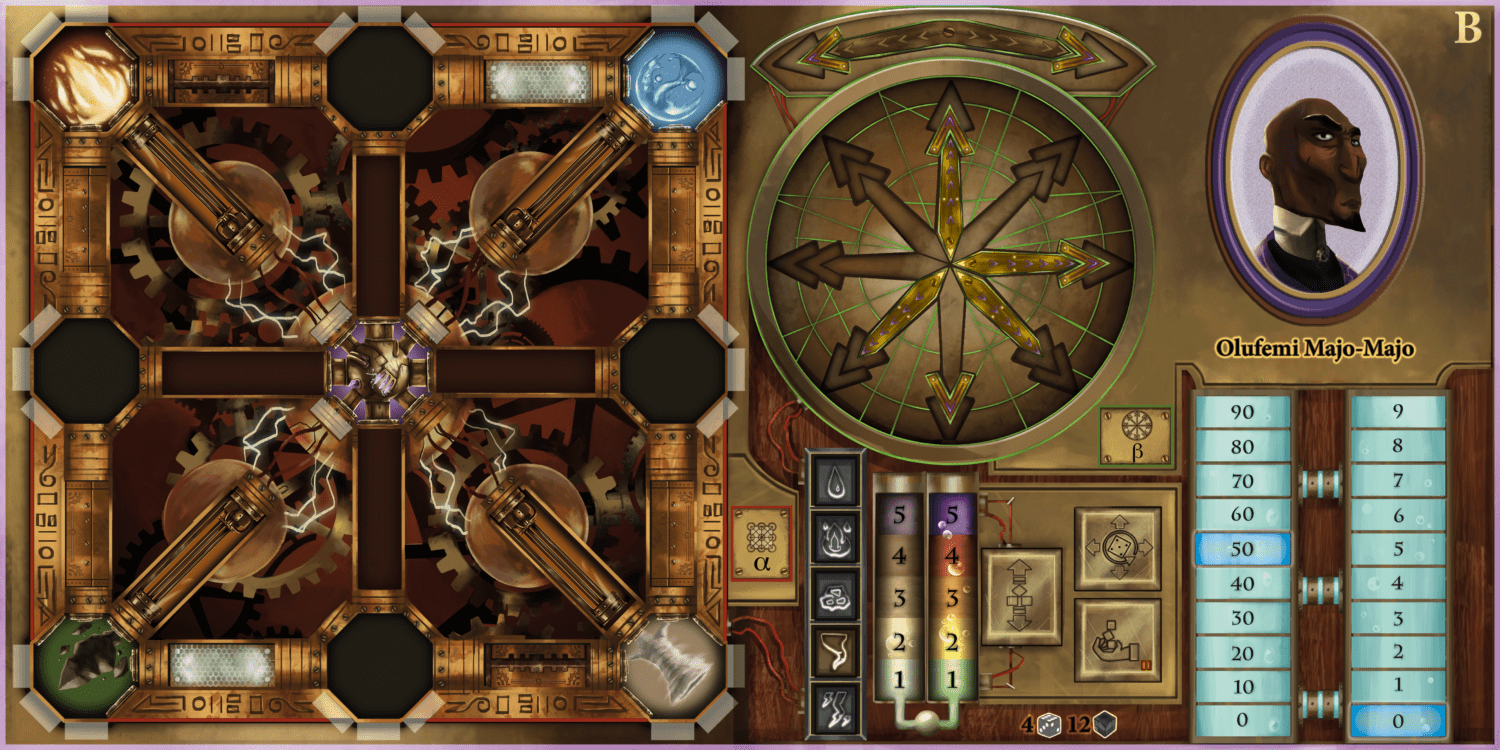
To the left of your Kinematics is the large square that makes up your Artillery. Your Cannons will also be pre-set on your initial boards, showing which directions you can fire in.
Take two white cubes and put one in the 50 slot in the 10s column in the new blue area in the lower right corner. Place another cube in the zero slot for the 1s column. This shows you’re starting the game with 50 points in your Matrix Fluid gauge. (e.g., Hit points) When your Artefact is hit by enemy fire, this number will decrease. If it ever reaches 0-0, your Artefact has been destroyed. Remove it from the Arena and await the next game.
Next to the new number for energy cubes, you’ll see a number for six-sided dice. Placing these dice on the Geodes at the end of your Cannons will help to further power your artillery. Dice on Geodes that face other dice on Geodes pass additional energy to each other equal to the die face facing the other die, while the outward facing die face boosts the power of the Cannon. The top number of the die is the range of the blast.
Of course, if you’re going to be shooting at others, they’re going to be shooting at you, too. That means you’ll need some defensive Shields.
Between the Cannons in your Artillery are rectangular slots for Shields. Your pre-configured Artefact comes with a mix of Shield types: Light, Reinforced, and Mirroring. You can find the defensive strength of the various combinations of Shields in the rule book.
The other big change to your Artillery section is the addition of hexagonal tokens at the ends of your Cannons. These are Geodes, whose elemental powers help to increase the damage your Cannons can produce. The rule book includes a chart to track the additional damage your Cannon’s Geode does against the Geode at the center of your enemy’s Artefact.
Your second game, then, will consist of piloting your Artefact around the Arena, scoring points either by shooting or landing on Prestige tokens and, of course, shooting at your opponents. The game includes a helpful Offense/Defense point tracker to help with the latter but, in general, you’ll score points equal to the strength of your attack, while your enemy will lose Matrix Fluid points equal to the attack minus their Shields.
Game Three: Build It Yourself
Having played several games with pre-built Artefacts, you’re ready to build your own!
You’ll start out with a blank, two-layer Artefacts player board with slots for Needles, Arrows, Cannons, Shields, and Geodes—everything you’ll want to create a mighty, battle-worthy machine.
However, it’s not that simple.
To increase the challenge, each element now has a specific point value:
1 Point: Light armor, Energy cubes, Cannon, Needles
2 Points: Reinforced/Mirroring armor, Arrows, Geodes, Energy dice
You’ll only have 60 points to spend when creating your Artefact—which you’ll quickly find doesn’t go very far.
For instance, a fully armed Cannon will require 5 points. (1 for the Cannon, 2 for a Geode, 2 for an Energy die) Two of those are 1/6th of your points. Moving your Artefact forward in any direction will take 3 points. (1 for a Needle, 2 for an Arrow) Those 5 actions you’ll want to take each round will cost you 10 points. (5 Energy cubes for the action track, 5 to place on the item whose action you’re taking)
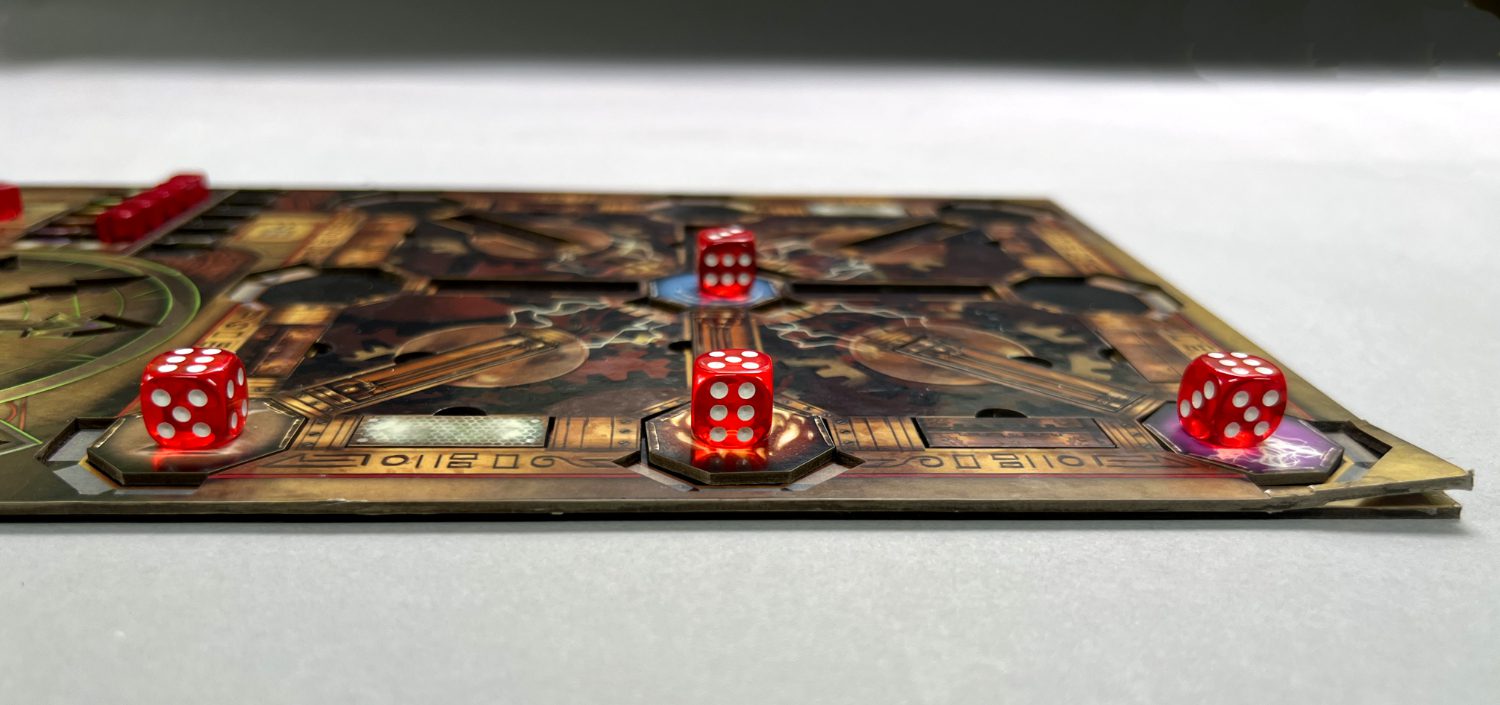
From there, the game progresses as in Game Two, with points accumulated for Prestige tokens and shooting your opponents over a set number of rounds.
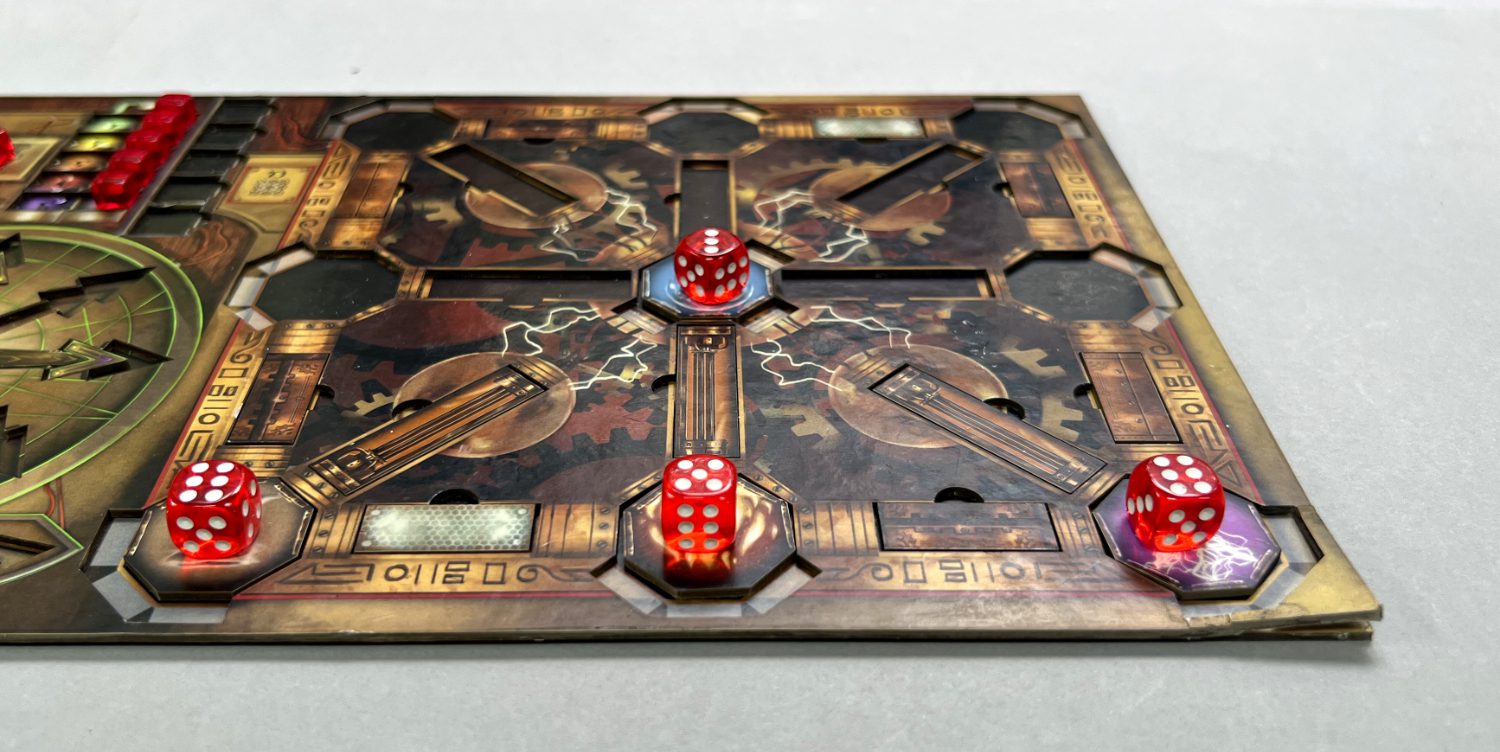
While it may be tempting to start this game at more than four rounds, from experience, I recommend you stick with four. Chances are the Artefact you created by distributing those points won’t be as functional and flexible as you think it is.
Game Four: Acquire Your Components
So far, all the components that make up your Artefact have been plentiful and there for the taking. By adding a second player board that keeps track of the new Management phase, you’ll learn how to collect the elements that make up your Artefact.
Players will start with polyominoes that represent a single Needle, Arrow, Cannon, and Shield. Place these in the upper blue areas, along with two white cubes. Throughout the Management phase, you’ll be able to add these to your collection of usable parts.
You’ll also add two new circular boards, the Emporium and the Calendarium. The Emporium has a display of polyominoes which represent specific components that you’ll be able to acquire to add to your Artefact. The Calendarium charts the phases of the Management game leading up to the battle in the Arena.
Each player receives three circular tokens in their color. You’ll use these, worker-placement style, on the large hexes that represent the new Modules available to you. The default three Modules are:
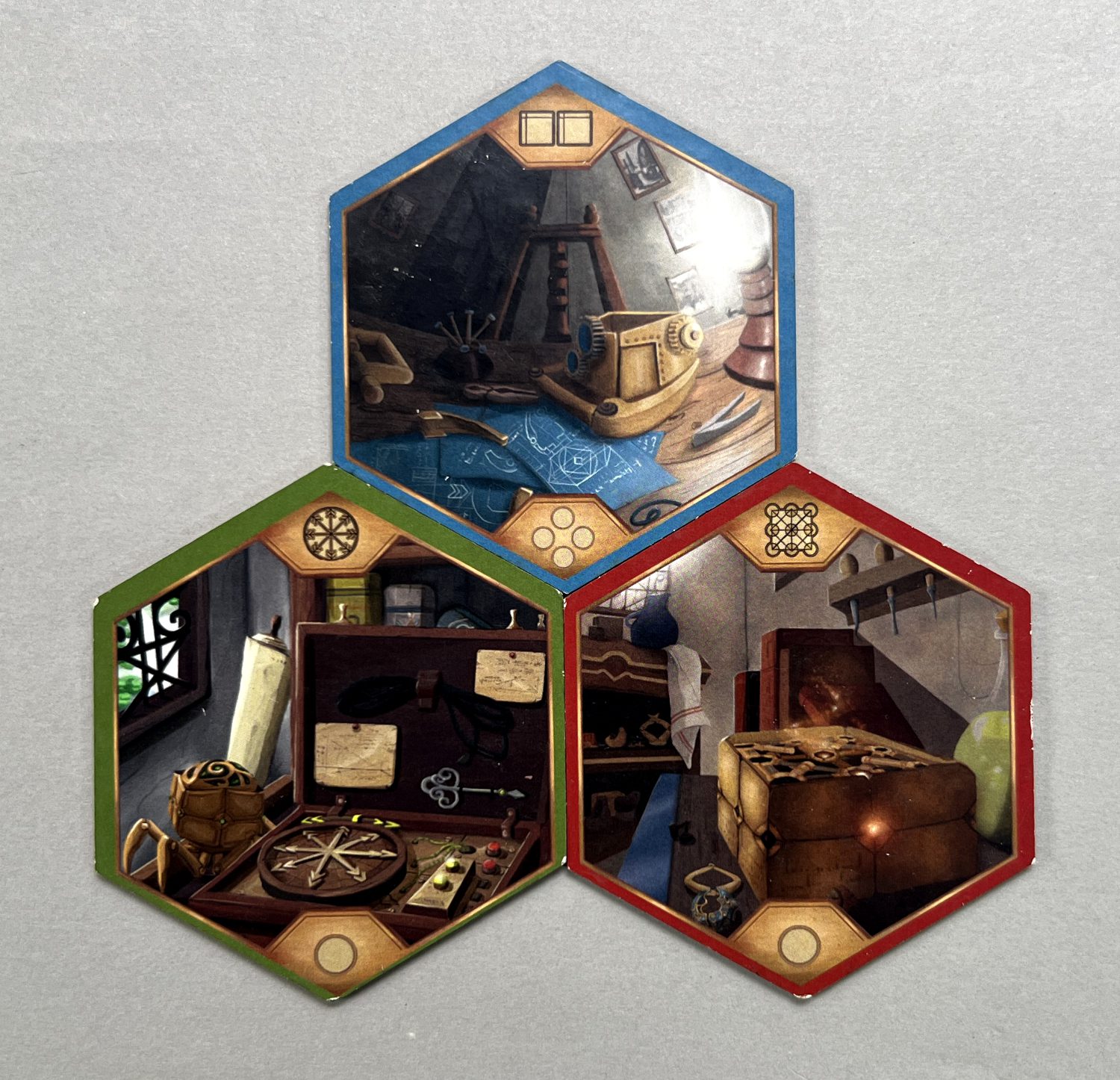
The Builder: By consulting the results of two six-sided dice rolled for these Modules, reference the coordinates in the upper blue area of your Management board. Any polyomino that is touching the target square produces one of that item for your Artefact.
Architectonic Installation: Allows you to install Geodes and Cannons from your collected items into your player board’s Artillery areas.
Kinematic Installation: Allows you to install Needles and Arrows from your collected items into your player board’s Kinematic area.
The basic Management game only requires these three Modules. However, there are many other modules you can add to your game. For instance, you can choose to:
- add items that improve your Geodes’ powers of attack and defense
- accumulate your Matrix Fluid points instead of starting with equal numbers
- set up the walls in the Arena differently at the start of each game
- play with high-quality machine parts that cause much more damage
- add Traps to the Arena
- merge Geodes to create Complex Geodes
- change your Cannon’s firing trajectory
You can add these Modules individually or in groups of your choosing to fit your own, unique style of play.
Thoughts
Artefacts asks the intriguing question, ‘How much game do you want to play?’ It’s cleverly designed to be flexible in how its Modules interconnect, encouraging you to add as many—or as few—as you wish to each game. Not only can you experiment with the different Modules, but you can then tailor your games based on how much time you have.
Have 30-45 minutes? Use a pre-build Artefact and play a few rounds collecting Prestige points—and, if you want, add in shooting at your competitors. Have an hour or more? Build your own Artefact and blast away at each other in the Arena. Want to play Artefacts all afternoon? Add in some of the Management Modules that intrigue you and compete for your Artefact’s components and augment your firepower and shields.
My weekly gaming group enjoyed the intro games with the pre-built Artefacts. As experienced gamers, these games were okay, but not great. Once we started building our own Artefacts, they requested the game several weeks in a row. We labored to build the best Artefact possible, given our 60 points. Then, after each game, we each went back to the drawing board to bolster the weaknesses our opponents had exploited and improve our firepower.
Even though we weren’t playing the Management phase (yet), I added in the Module that allowed me to set out a new pattern of walls at the start of each game. It’s a simple process, and one that we all agreed added to the fun of the game.
The Management phase introduces a worker placement mechanic to Artefacts. Initially, it felt out-of-step with the Arena game. Narratively, however, it makes sense—each game in the progression takes you one step further back in the process of using/making your machine: Using pre-made Artefacts, building your own Artefact, acquiring the components to build your Artefact.
The Modules we tried each introduced new components and new rules—basically new games—that we needed to learn before playing. We liked them, but what we really wanted to do was get back to the Arena and test out our new Artefact designs against each other.
The one negative I have about my review copy of Artefacts is the rule book. As Franck , the designer, acknowledged, it’s very much a work in progress. The version of the rule book I had was unclear in many places. I messaged him several weeks in a row, after we played various games within Artefacts with very specific questions. was generous with his time, providing answers the next day and even offering screen sharing sessions to discuss the gameplay. I’m very hopeful that the rule book will be re-edited, in part, based on our conversations.
Artefacts is simple enough for new gamers (and young kids) to play the introductory games, and complex enough to take up an entire day’s worth of gaming. It’s up to you as to what parts of the game you want to play each session, craeting a large degree of replayability. It’s definitely worth your time to check out the Kickstarter campaign, which starts today, June 10, 2024.
You can also learn more about Artefacts and its designer, Franck Bovet, in my 6 Questions interview.


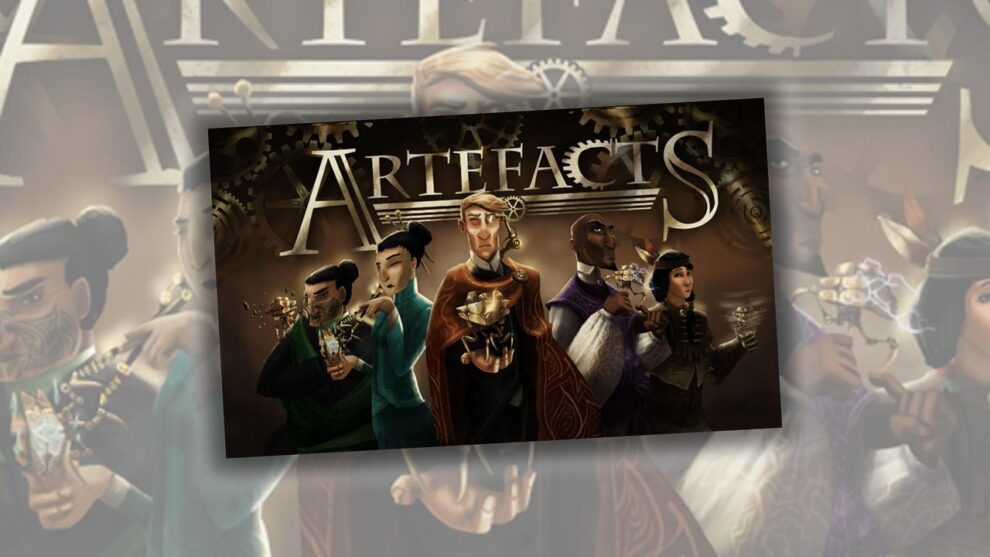








Add Comment